The Waterside Inn is an icon of the British dining scene, the second UK restaurant to earn three Michelin stars after Le Gavroche, which earned the accolade in 1982 before losing the third star in 1993. Opened in 1972, The Waterside Inn gained a Michelin star in the brand-new Michelin UK guide in 1974, a second in 1977 and the ultimate third star in 1985. The restaurant deserves its name, with a particularly pretty riverside setting overlooking weeping willow trees and the river Thames beyond. There is a pier at which boats can tie up. There are also some rooms above the restaurant where guests can stay after dinner. The kitchen was originally run by Michel Roux, with Pierre Koffmann as his head chef until 1977. Michel handed over the culinary reins in 2002 to his son Alain. There are actually two joint head chefs at present, leading a kitchen with 25 chefs. Fabrice Uhryn has been cooking at The Waterside Inn since 2001. Adam Wright started at the Waterside early in his career, but has spent the last six years working in the kitchens of Troisgros and Guy Savoy until returning to the Waterside Inn as co-head chef in late 2022.
There was a tasting menu at £235, a four-course menu at £160 at dinner (£140 at lunch) as well as a full a la carte menu. The dining room looks out over the Thames and has well-spaced tables. There is a separate private dining room that serves an entirely separate “party” menu that is significantly less ambitious in culinary terms. The main dining room typically seats around 45 or so diners, depending on configuration.
The wine list has over a thousand labels, but only a small subset is published on their website. Using this sample list of 35 labels and ranged in price from £52 to £850, with a median price of £149 and an average markup to retail price of 3.2 times retail, which is more common in Mayfair than Bray but is not the worst these days. Sample references were Domaine du Chardonnay Chablis 2019 at £65 for a bottle that you can find in the high street for £18, Louis Jadot Santenay ”Clos de Malte” 2018 at £96 compared to its retail price of £37, and Château de Malle, Saint-Hélène Sauternes 2011 at £99.50 for a wine that will set you back £26 in the high street. For those with the means there was Taittinger Comtes de Champagne Blanc de Blancs 2007 at £570 compared to its retail price of £188, and Jacques Prieur Corton Charlemagne 2009 at £850 for a wine whose current market value is £370. Water was £9 a bottle. From the full list there were a few wines that were good value in terms of relative markup. An example was Prieur-Roch Nuits St George 2009 at £620 compared to its retail price of £950, which we drank. However, there are plenty of less appealing examples: Mas de Daumas Gassac vin de Laurence 2020 was £450 compared to a shop price of £81.54, five and a half times its retail price.
The meal started with a pair of canapes. A tartlet of pickled radish with caviar (oscietra from Kings Caviar) in a polenta shell was pleasant, the sharpness from the picking juices bringing some balance to the briny caviar. I preferred pea croquette using Provencal peas, which had quite good pea flavour (16/20 average). Bread rolls were either baguette or rye bread, made on the premises. An amuse bouche was veal tonnato featuring cold veal from Limousin with tuna sauce along with capers and hazelnuts. This was harmless enough but I have had much better versions in the Mediterranean (16/20).
The meal stepped up a gear with white asparagus from south west France along with Scottish morels, leeks mint and a sabayon flavoured with leeks and mint. The asparagus was excellent, without even a hint of stringiness, cooked through and complemented by the lovely morels (17/20). Foie gras from Philippe Andignac was pan-fried and served warm, along with capers, croutons, beansprouts and a gastrique sauce. This was a high-grade foie gras and had silky texture, the gastrique sauce providing sharpness to balance the richness of the liver, while the beansprouts provided an interesting textural contrast (18/20).
Red mullet was cooked over Japanese binchotan charcoal, imparting a gentle hint of smokiness. This was served alongside a block of aubergine with pandan leaves and wild rice flavoured with lapsang souchong tea, all served with a bouillabaisse sauce. The red mullet itself was superb, cooked very precisely and having lovely flavour. Red mullet is a fish that tends to be either gorgeous or muddy in flavour, and is best eaten at restaurant where the chefs know what they are doing, as they clearly do here. The aubergine would not have been my first choice of accompaniment, but the wild rice was an interesting idea to give a textural contrast (comfortably 18/20).
Pan fried lobster medallions with white port and ginger sauce used Canadian lobster today (native lobster is sometimes used) and was quite tender, served with julienne vegetables. This is an old dish from the early days of the restaurant and was certainly nice enough, though I preferred some of the more modern dishes today (16/20). Pressed duck used duck from Challons in France (on occasion they use a British duck for this dish). The duck breasts were served with a sauce made from the pressed juices of the duck carcass, these being flambeed at the table along with brandy to make the sauce, a reduction of shallot. The duck was carefully cooked and still pink, while the sauce was not overly rich. On the side was a courgette flower stuffed with mushrooms, which provided some lightness as balance. This was accompanied by beans and some really superb souffle potatoes that were crisp and delicate (18/20).
Cheese was a large selection from a trolley, all French and in excellent condition. Dessert was rhubarb souffle, the souffle using a classic egg base. It was cooked through consistently and had risen evenly, the acidic sharpness of the rhubarb cutting nicely through the richness of the souffle (18/20). Service, led by Dean Bonwick today, was excellent: there were copious staff, and all aspects of the service were very professional. The coffee was Musetti, a cheap coffee that tastes to me of bitterness and disappointment, so I drank tea, which was accompanied by some excellent petit fours.
The bill, albeit with some very good wine, came to £1,020 per head. If you went a la carte and shared a bottle of modest wine then you might be able to leave for about £220 per person. However, if you move up the wine list then your bill will climb considerably from that base. The Waterside Inn is never going to be a cheap outing, but it does have a striking setting and very welcoming staff, as well as an appealing menu. It was good to find that the food had improved since my previous visit, presumably due in no small part to the new joint head chef.
Further reviews: 29th Oct 2016 | 09th May 2010





































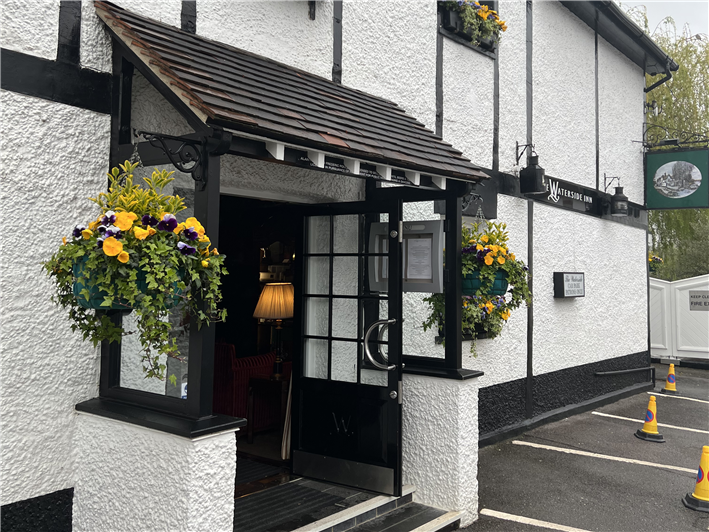

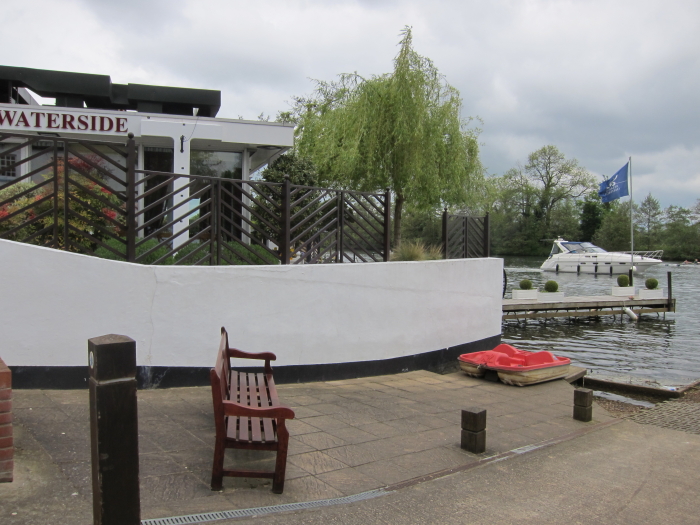
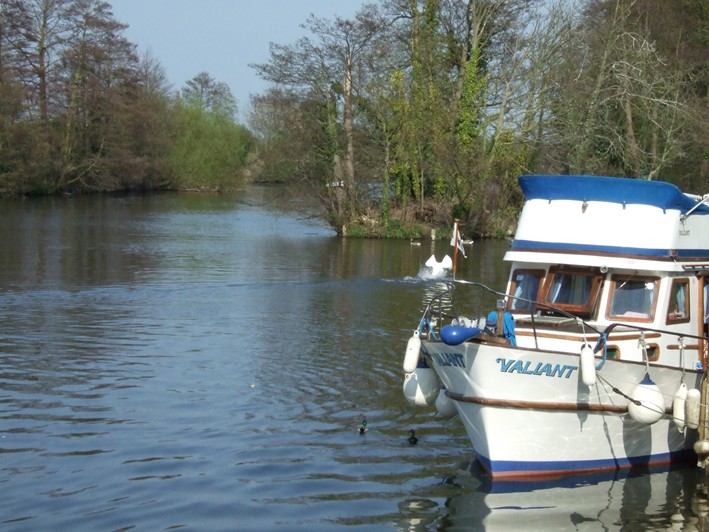

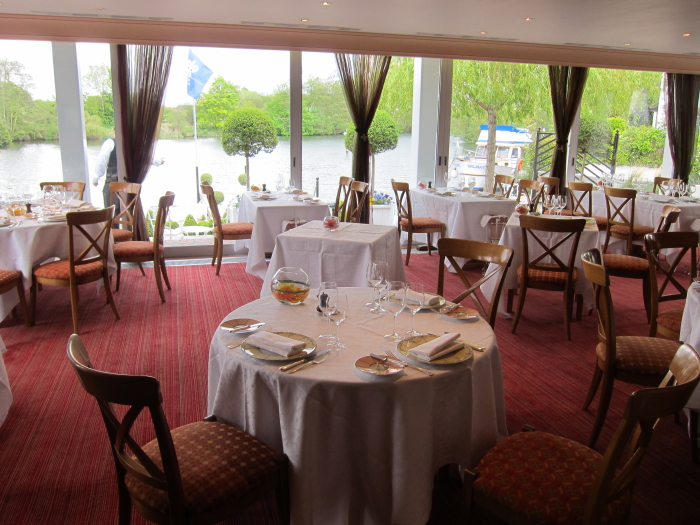

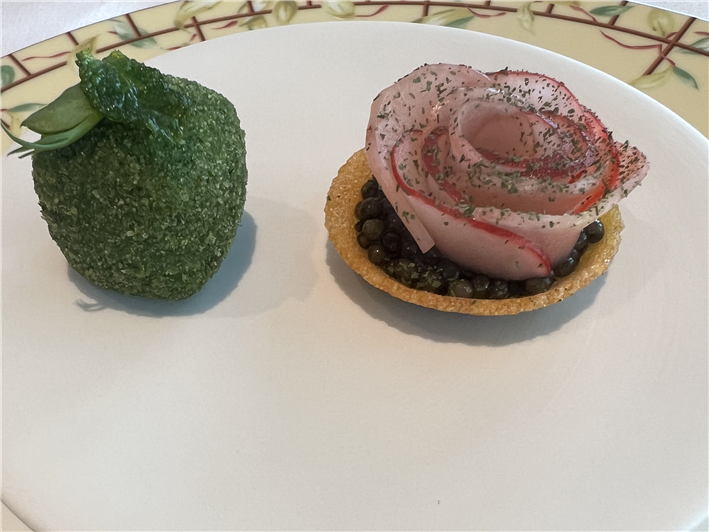

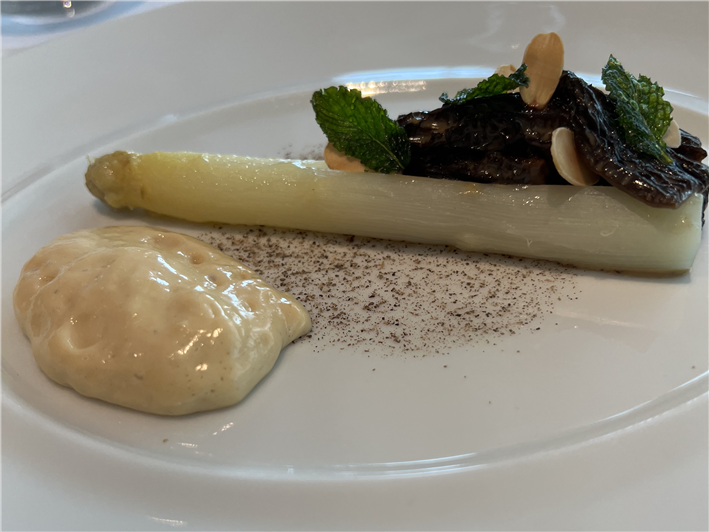
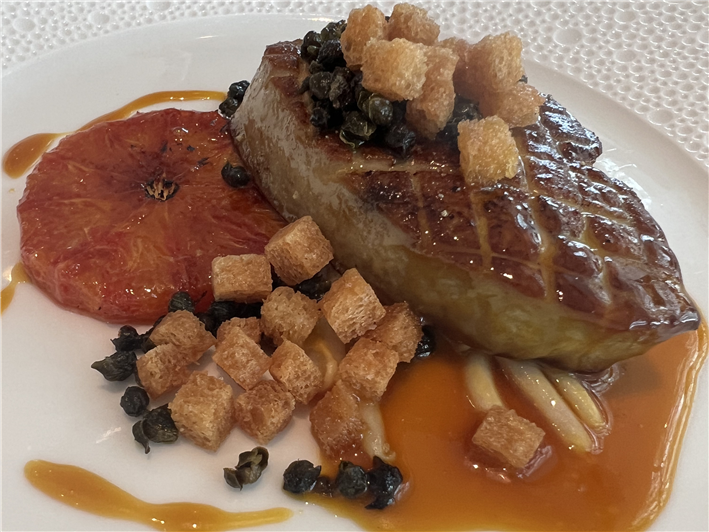
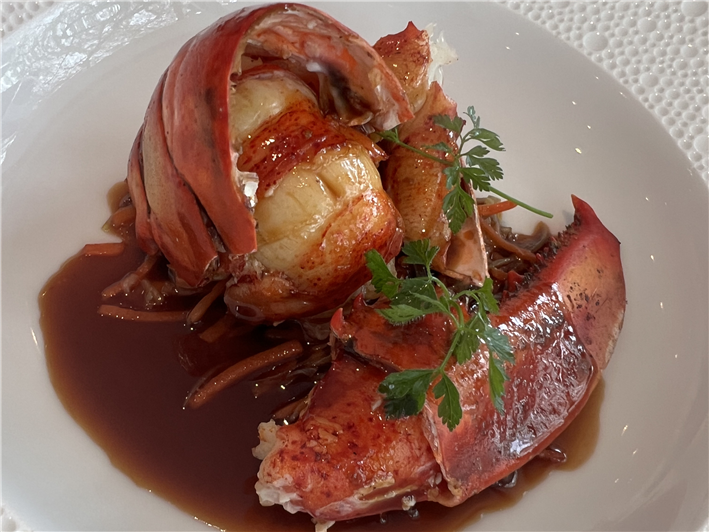




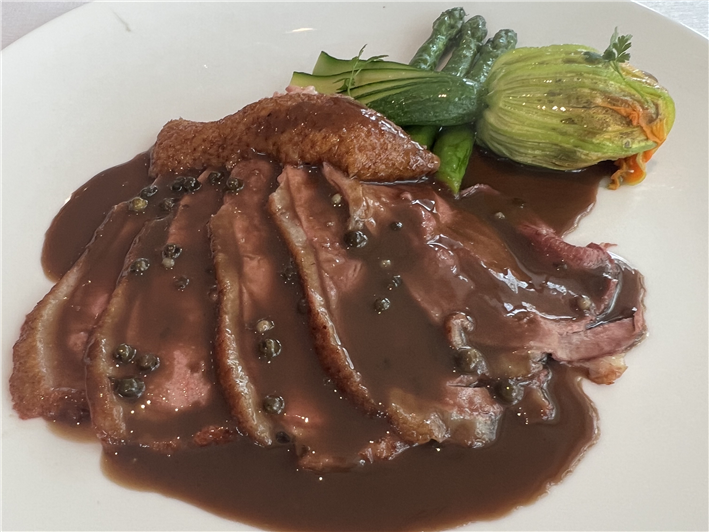
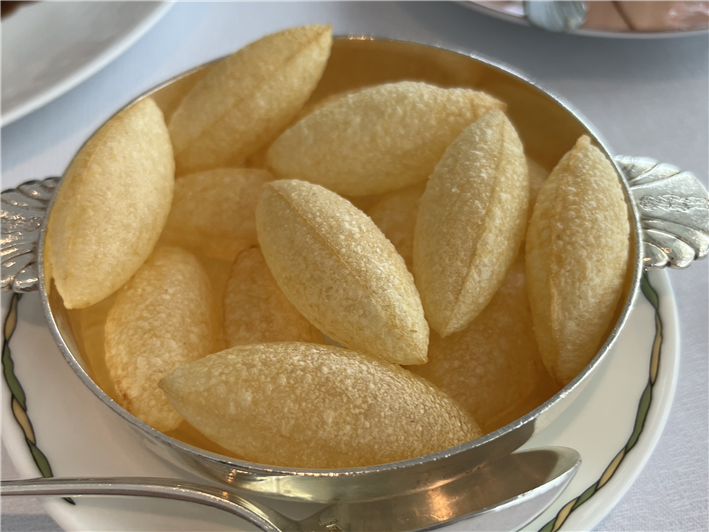
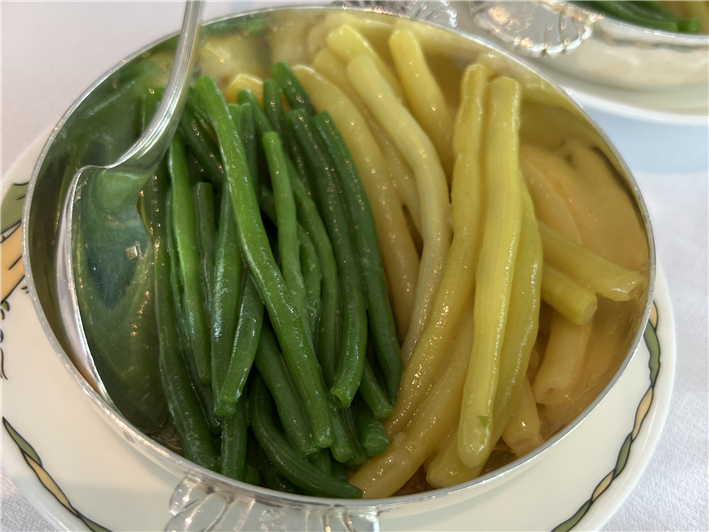
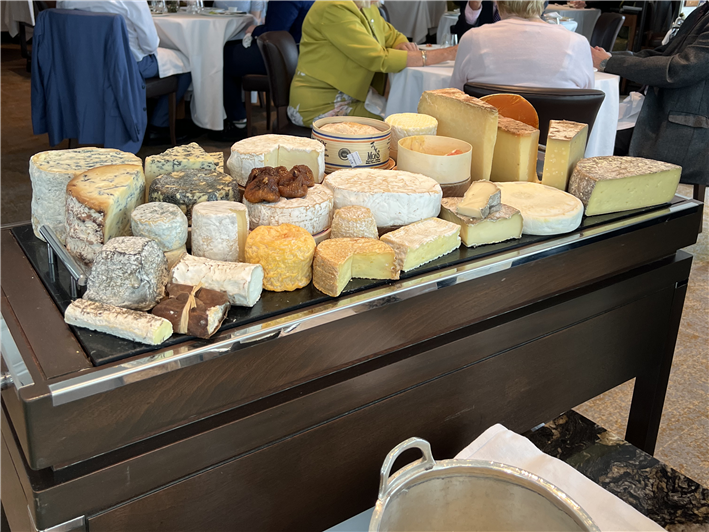
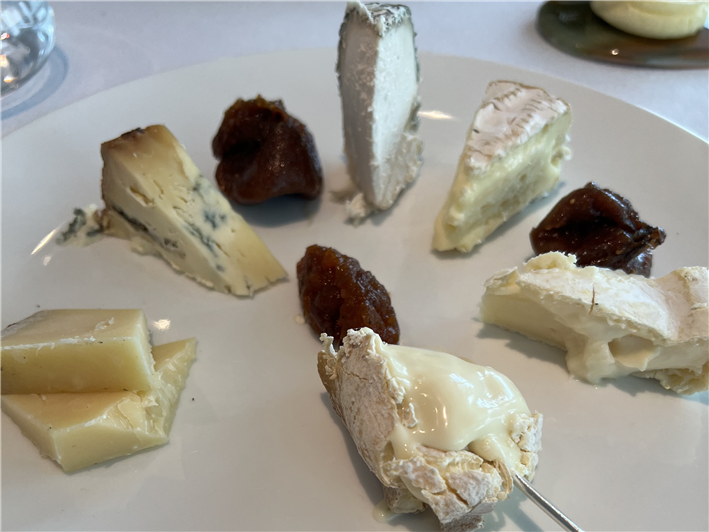
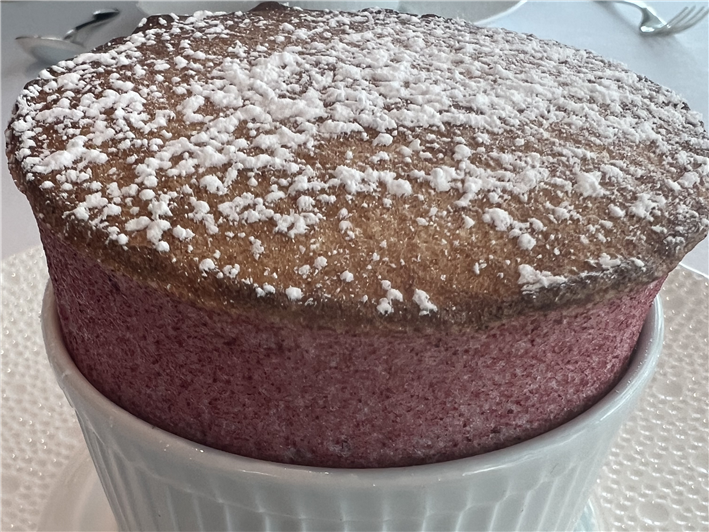

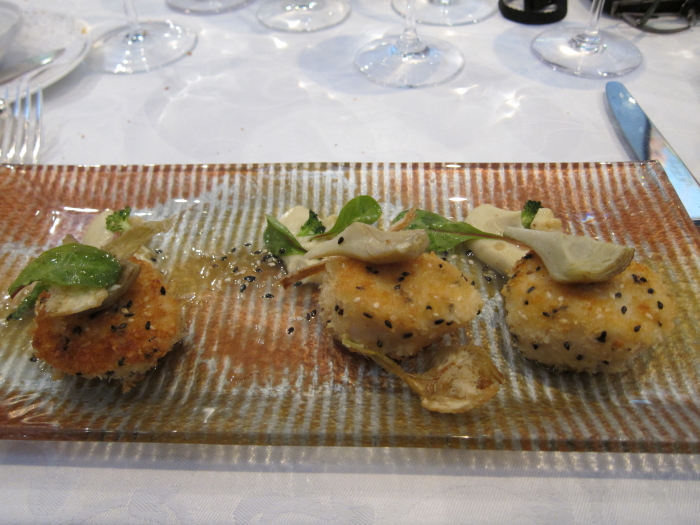
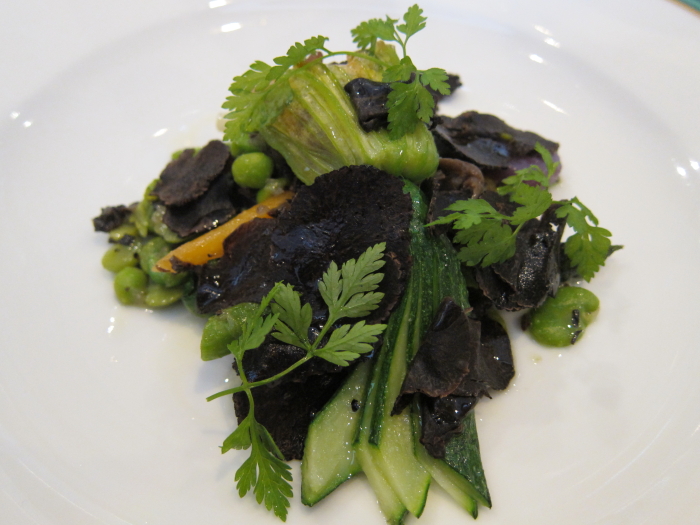
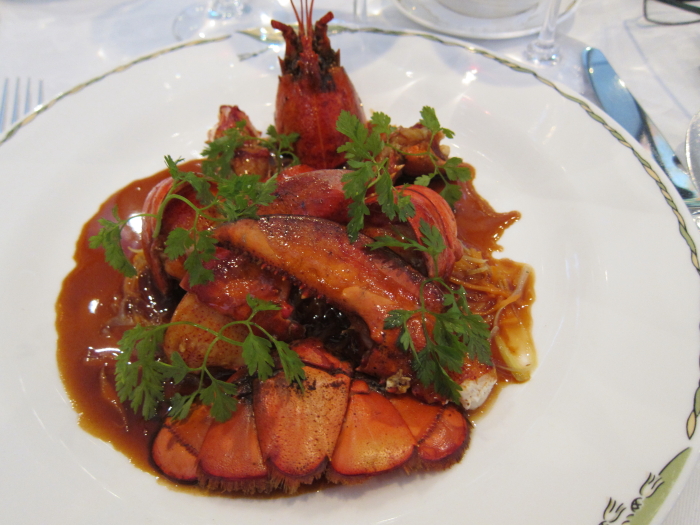



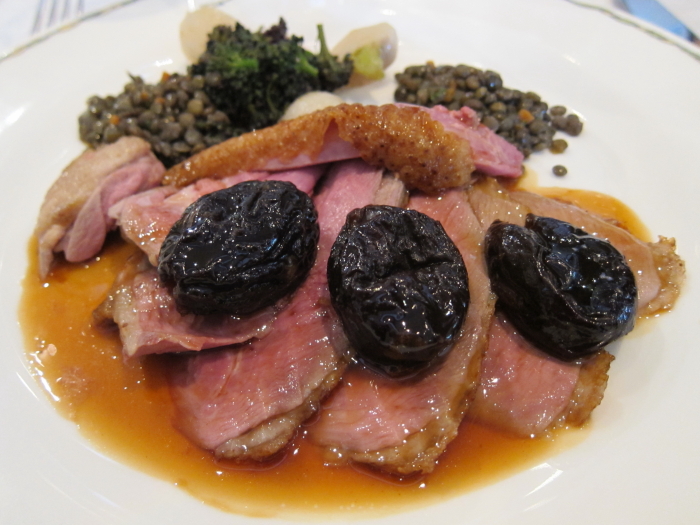
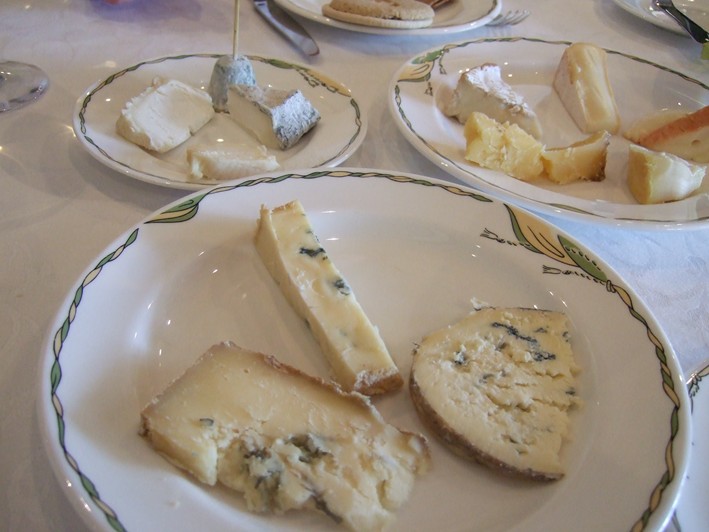


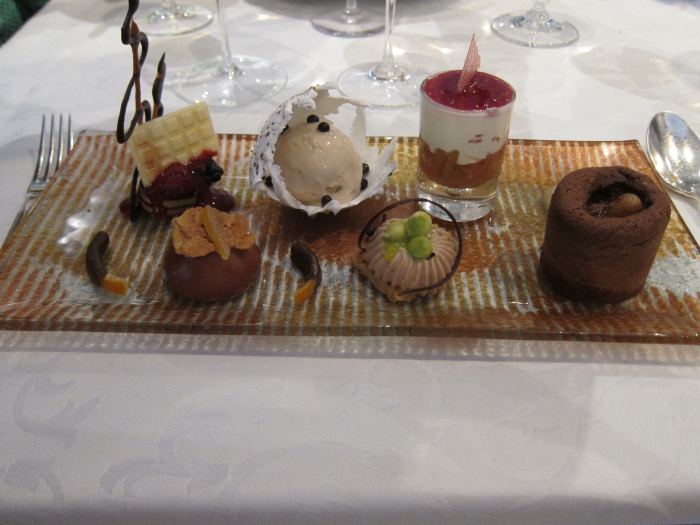
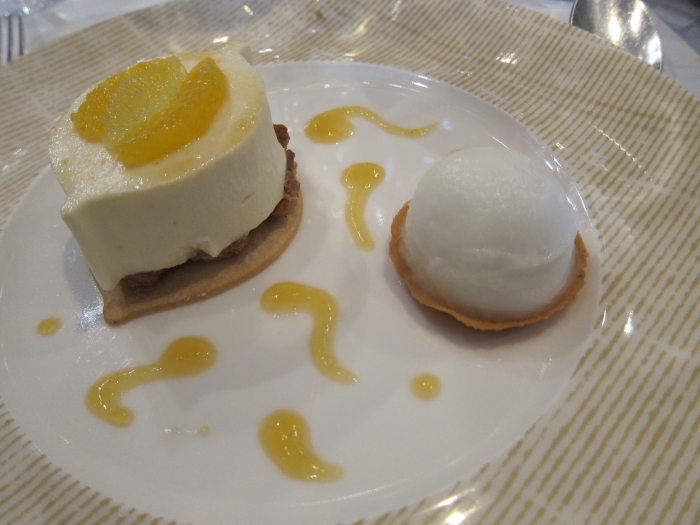


Add a comment
Thank you for submitting your comment, this will be checked and added to the website very soon.
User comments